Composition
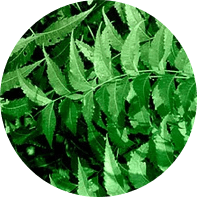
AZADIRACHTA ÍNDICA (NEEM)
It is an evergreen tree native to the Indian subcontinent, used in Ayurvedic medicine. The Azadirachta indica L (Neem) shows a therapeutic activity due to a rich variety of components including azadirachtin 1.
The components of Azadirachta indica exert useful pharmacological effects in the management of various pathologies through different action mechanisms, although antioxidant activity is outlined as one of the main 1.
The efficacy of Neem applied intra-vaginally versus placebo in HPV elimination in women with HPV 16 positive for HPV 16 with or without low-grade squamous lesions (LSIL) has been evaluated 2. The results show an 80% of negativisation of HPV 16 compared to 10% with placebo, which is accompanied by an improvement of the symptomatology and cytology.
These results show that the intravaginal application of Neem may be effective in eliminating HPV infection.
1. Alzohairy M. Therapeutics Role of Azadirachta indica (Neem) and Their Activa Constituents in Diseases Prevention and Treatment. Evidence-Based Complementary and Alternative Medicine 2016 ID 7382506. 2. Shukla S, et al. Elimination of high-risk human papilomavirus type HPV 16 infection by “Praneem” polyherbal tablet in women with early cervical intraepithelial lesions J. Cancer Res Clin Ocol (2009) 135: 1701-1709.
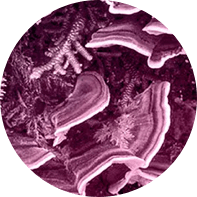
CORIOLUS VERSICOLOR
WHAT IS IT?
It is a Chinese-origin mushroom containing ß-glucan polysaccharides,
polysaccharide-K / Krestin (PSK) and polysaccharidopéptide (PSP), known immunostimulating properties, antimicrobial and antitumor activity and traditionally used in Asia as a dietary supplement1 ,2.
The biomass of the fungus acts as a nonspecific immunomodulator, boosting the immune system mainly after radio / chemotherapy. Their ß-glucans are capable of causing selective apoptosis on cancer cells but without affecting the healthy ones. There are several studies demonstrating that the PSK and PSP proteoglycans of the fungus stimulate the effect of natural killers and increase the number of T lymphocytes 3-6.

Coriolus versicolor has also been investigated in humans. An observational study7 showed the potentiating effect of cellular immunity which results in an antitumor activity in patients with different types of solid cancers, many of them resistant to chemotherapy and radiotherapy.
In patients with HPV infection, a regression effect of low-grade squamous intraepithelial lesions on the cervix has been observed, in addition to a significant virus negativization 8-11. A recent study 12 evaluated the effect of Coriolus versicolor on patients with HPV + with low and high risk lesions. The authors concluded that the fungus potentiated the immune system of the patients in a natural way which meant the elimination of the virus.
1. Ng TB. A review of research on the protein-bound polysaccharide (polysaccharopeptide, PSP) from the mushroom Coriolus versicolor (Basidiomycetes: Polyporaceae). Gen Pharmacol. 1998;30(1):1-4 2. Cheng KF, Leung OC. Revisión general de polysaccharopeptides (PSP) de C. versicolor: Los estudios farmacológicos y clínicos. Artículo de Revisión. Feb, 2008 3. Jiménez-Medina E, et al. The immunomodulator PSK induces in vitro cytotoxic activity in tumour cell lines via arrest of cell cycle and induction of apoptosis. BMC Cancer 2008 Mar 24;(8):78. 4. Harhaji Lj, et al. Anti-tumor effect of Coriolus versicolor methanol extract against mouse B16 melanoma cells: in vitro and in vivo study. Food Chem Toxicol. 2008 May;46(5):1825-33. 5. Ho CY, et al. Coriolus versicolor (Yunzhi) extract attenuates growth of human leukemia xenografts and induces apoptosis through the mitochondrial pathway. Oncol Rep. 2006 Sep;16(3):609-16. 6. Chan SL, Yeung JH. Polysaccharide peptides from COV-1 strain of Coriolus versicolor induce hyperalgesia via inflammatory mediator release in the mouse. Life Sci. 2006 Apr 18;78(21):2463-70. 7. Kenyon J. Observational Non-Controlled Study of the Use of Coriolus versicolor supplementation in 30 Cancer patients. Mycology News 2003 Vol. 1 Edition 7. 8. Chernev T. Coriolus-MRL supplementation in patients infected with low-risk and high risk HPV subtypes – Bulgarian experience. Poster in 3rd Congress of gynecologist and obstetricians of Macedonia (with international participation) 2013. 9. Couto S. Evaluation of Coriolus versicolor Supplementation in HPV Patients. Clin J of Mycology 2007; 2(1):2-5. 10. Couto S. Coriolus versicolor en el tratamiento de las lesiones por VPH en el cuello del útero. Revista de Fitoterapia 2009; 9 (suppl 1): 55-58. 11. Monro J. Cytokine Th1 to Th2 Shift can be Reversed by Coriolus. Prospective Trial for HPV Control with Coriolus. Clinical Journal of Mycology 2005; 1 (Ed. 10): 4. 12. Borisov S. Evaluación de Coriolus MRL en pacientes con HPV de bajo y alto riesgo. Revista Clínica de Micología 2012; 3: 2-3.
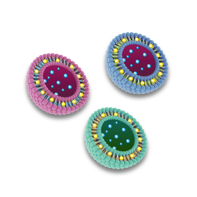
NIOSOMES & PHYTOSOME
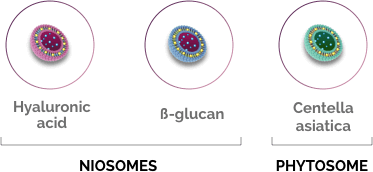
The encapsulated hyaluronic acid within the niosomes hydrates the tissues and provides elasticity to the mucosa. Β-glucan fulfills anti-inflammatory and antioxidant functions, thereby maintaining the structure and functionality of the mucosa. The active ingredients of Asian Centella, thanks to phytosomal technology, penetrate the basal layers of the epithelium and stimulate the activation of collagen.
Niosomal and phytosomal technologies allow faster and deeper absorption of the active ingredients, hyaluronic acid and β-glucan, as well as Centella asiatica. The integration of these active principles in spherical form increases their effect thanks to the action at the basal level of the cells of the epithelium.
Dr. Fernando Losa, Clinical Gynecologist Sagrada Familia
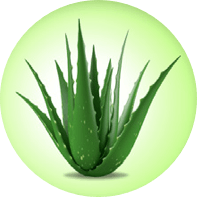
BIOECOLIA & ALOE VERA
